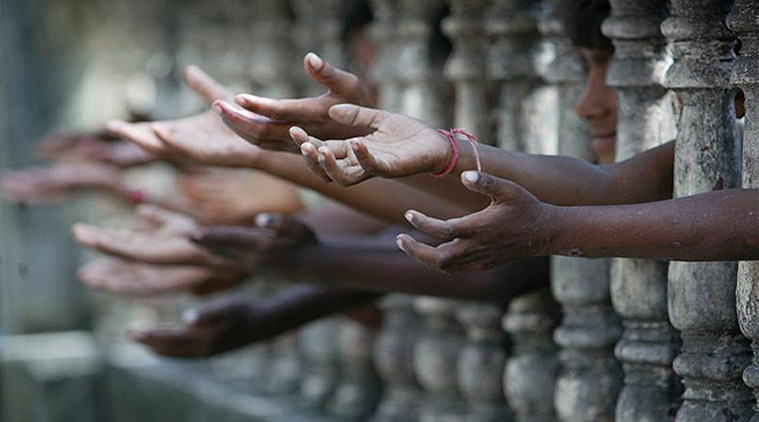 The under-reporting is also suggestive of a large section of children falling frequently ill but missed by the WCD department (Representational)
The under-reporting is also suggestive of a large section of children falling frequently ill but missed by the WCD department (Representational)
A survey by the public health department in four districts of Maharashtra has found significant under-reporting of malnutrition cases. The preliminary findings in three of these districts — Pune, Nandurbar and Raigad — show that percentage of wasting and of under-nutrition is higher than as recorded by the National Family Health Survey-4 and the Integrated Child Development System (ICDS), a scheme that provides free, nutritious meals to children.
In Pune, for instance, the survey found that 28.18 per cent children, aged less than six, were underweight as opposed to ICDS records that registered 10.38 per cent underweight children. Malnutrition was found in 14.5 per cent cases in contrast to 5.03 per cent under ICDS.
The government survey was conducted after a non-government organisation (NGO) presented similar findings from a study of 25 anganwandis in October last year. The previous study conducted by NGO Sathi surveyed 1,659 children and found that anganwadis had no or incomplete records of 50.9 per cent of the children. An anganwadi is a centre where free, nutritious meals are provided to children aged less than six under the ICDS scheme, which is run by the Women and Child Development Department.
The Sathi study further said there were 29.1 per cent malnourished children, and proportion of under-reporting was higher in Palghar and Nandurbar. As opposed to the Sathi study, under National Family Health Survey-4 (NFHS-4), the prevalence of severe acute malnutrition stands at 9.4 per cent and that of moderate acute malnutrition at 16.5 per cent in Maharashtra.
Following the findings, the public health department was directed to conduct a detailed survey across 15 primary health centres in Nandurbar, Raigad, Pune and Palghar through a team of medical officers, child development project officers and Sathi representatives.
The survey began in November last year, and is yet to cover children in Palghar. The preliminary findings say that presence of “medical officers and trained supervisors yields higher rates of detection”. It recommended that anganwadis require capacity building and standardisation in measuring equipment to diagnose SAM (severe acute malnourishment) and MAM (moderate acute malnourishment) of children.
In Pune’s Junnar block, the public health department found that of the 809 children surveyed, 118 or 14.59 per cent were wasted. Of these, 103 were MAM (12.7 per cent). When compared, ICDS records found only 5.03 per cent wasting and 4.02 percent MAM in Pune.
Similarly, there was disparity in records of underweight children. The ICDS data of 50 anganwandis in Pune showed 10.3 per cent children were underweight, while the latest health survey diagnosed 28.18 children as underweight.
In Nandurbar, across 174 anganwadis 9,744 children were analysed. Of these, 94 were found SAM and 305 MAM. Nandurbar is also the district with highest deaths related to malnutrition in Maharashtra. Local activists allege that anganwadi workers do not regularly visit the centres to serve meals to enrolled children in the tribal district.
In Raigad’s Karjat block, 1,621 children were observed and malnutrition was found in 8.9 per cent of them.
Figures from the NHFS-4 suggest wasting is prevalent in 25.6 per cent children, of which 9.4 per cent are severely wasted in Maharashtra. State health department officials, however, estimate the prevalence may be higher across all districts following this survey. Those who were part of the survey said they could not cover the entire population, indicating that a few undernourished children may have remained out of radar. “Those children not availing ICDS services were not included,” the survey report said.
“Under-reporting could be deliberate. But it also possible that records are not kept properly by anganwadis. It seems unlikely that migration could be responsible for why there is under reporting,” said activist Brian Lobo from Palghar. He added that the WCD must ensure that anganwadi supervisors monitor anganwadi workers.
The under-reporting is also suggestive of a large section of children falling frequently ill but missed by the WCD department. Children are given four eggs a week and two meals every day in anganwadis. Those found malnourished are provided additional meals, six per day, through the village child development centre.